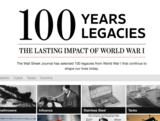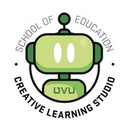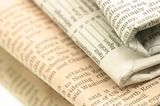
Wall Street Journal interactive that allows students to research and explore 100 ways in which WW1 continues to leave a lasting impact.
- Subject:
- Social Science
- Material Type:
- Interactive
- Provider:
- The Wall Street Journal
- Date Added:
- 11/09/2023

Wall Street Journal interactive that allows students to research and explore 100 ways in which WW1 continues to leave a lasting impact.

This is a list of potential ideas based off a specific technology. None of these ideas are fully developed lessons. Please make changes and adaptations as necessary for the students in your class.

This is a large pdf unit designed to have students explore the ever changing and comples roles women played during WW1. Cross curricular--supports literacy standards.

Students analyze a letter written by Jackie Robinson to the White House in 1972. Students are guided to understand that racial equality still had not been achieved during this time. Students analyze tone, audience and context and draw conclusions. Background about Jackie Robinson's role in the Civil Rights movement should be provided to students.

Students analyze a photograph of child laborers and make inferences about the impact of the photograph on the photographer based on the message he was trying to convey. Background information about child workers during the Progressive Era included.

This course from the OER Project provides complete lessons, videos, and other resources on the rise of agriculture and early societies, expansion and interconnection among civilizations, economic changes, and so much more!

This is an activity where students learn about and compare 3 political revolutions. It has short age appropriate reads on the American, French and Haitian Revolutions. Students find keywords that describe the conditions that existed during the political revolution. They compare and contrast the 3 revolutions in order to find what all 3 of them had in common and write a paragraph on what conditions are necessary for a political revolution to occour.

This resource is a Social Studies student activity that utilizes Utah's Online Library resources - specifically, World Book Encyclopedia - Behind the Headlines to help students learn about current events.

In this social studies lesson, students examine the revolutionary aspects of The Declaration of the Rights of Man and Citizen and what it reveals about human rights.

For this activity, students analyze primary documents to understand food manufacturing conditions before and after food regulations were passed in 1906. Connects to the Progressive Era and the history of regulation. Students sequence documents and photographs in this online resource. Guided questions provided.
This lesson begins with a simulation that will let students feel what it was like to be a part of different estates in France prior to the French Revolution.
The French Revolution was instigated by the unfairness of the tax system in France, the example of the American Revolution, and the bankruptcy of the French monarchy.
In this lesson, students will come to understand how the Industrial Revolution impacted individuals. They will examine how the change from shop or cottage industry to the factory affected people, how the railroad affected individuals, and how some of the inventions of the Industrial Revolution changed individual lives.

Smithsonian resource. This collection of 5 videos visually tells the story of 5 labor leaders and how they worked to ensure safer working conditions, better wages, and how they brought forth state and federal legislation with their work.
This lesson helps students create a newspaper that will demonstrate their understanding of the processes of revolution, representative people in a revolution, winners and losers in a revolution, and the impact on the future. This lesson plan integrates social studies, language arts, art, and technology. Teachers can determine how expansive this task will be. What is essential to the assignment is that students demonstrate an understanding of the standard.
The Religious Reformation in Europe allowed for the spread of new ideas in both science and religion.

The lesson summarizes the role of religion in the Enlightenment and the establishment of the United States government.
In small groups, students will research various revolutions, and will then teach other groups about their selected revolution.
Students will use quotes from revolutionaries of various revolutions to come up with a general list of adjectives/descriptors for revolutionaries.

In this lesson, students learn the causes of the Russian Revolution and its effects in Russia and the world at large.